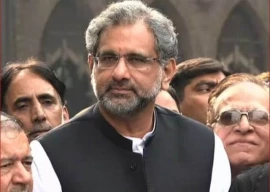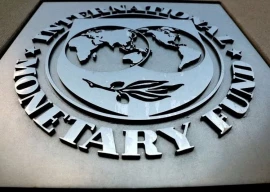
The International Monetary Fund (IMF) on Monday approved the disbursement of its last loan tranche worth $1.1 billion, marking the successful end of the second bailout package in eight years but it took heavy toll in the shape of unbearable inflation and slowing of the economic wheel.
The IMF Executive Board approved the completion of the second review of the $3 billion Stand-By Arrangement (SBA), the finance ministry confirmed. This also paved the way for the release of the last loan tranche of $1.1 billion.
The IMF board also backed Pakistan’s intent to get another bailout package to ensure “permanency in economic stabilisation and deepen structural reforms”. The IMF approval came just hours after Prime Minister Shehbaz Sharif termed the country’s debt trap a death trap.
Shehbaz made these remarks while addressing the closing session of the World Economic Forum (WEF) in Riyadh, Saudi Arabia, where he had a meeting with IMF Managing Director Kristalina Georgieva on Sunday to discuss the next bailout programme.
The IMF had not listed Pakistan in the April 29th calendar being issued on its website. Prime Minister Shehbaz, State Bank of Pakistan (SBP) Governor Jameel Ahmad and Finance Secretary Imdad Ullah Bosal played pivotal roles in first securing the deal in June 2023 and then pushing it to the finish line.
It is the second bailout package that the country completed in past eight years. Last time, it had successfully implementing the $6 billion Extended Fund Facility (EEF) from 2013-16. But it again had to seek another bailout package in 2019, which remained unsuccessful.
In July last year, Pakistan had signed the nine-month $3 billion SBA, which stabilised the economy and brought the current account deficit under control. However, the budget deficit remained out of the control and is going to end around 7.4% of the GDP as per IMF’s estimates.
The SBA also led to a significant increase in the burden on the people in the shape of higher taxes on the salaried class and an exorbitant hike in the prices of fuel, gas and electricity. The SBP lost its autonomy to the IMF and has remained unable to lower the interest rates despite a significant reduction in the current and the forwarding looking inflation projections.
It is high time now that the IMF should allow space for some economic growth, as the poverty rate is high at 40% with 10 million more Pakistanis at the verge of slipping into the poverty trap.
During the staff-level discussions, Pakistan had assured the IMF that it would “continue with the timely implementation of power and gas tariff adjustments to keep average tariffs consistent with cost recovery while protecting the vulnerable through the existing progressive tariff structures, thus avoiding any net circular debt accumulation in FY24”.
Since then there has been consistently significant increase in the electricity prices in the shape of monthly fuel cost adjustments. Also, the government twice increased the gas prices under the nine-month SBA arrangement. Yet, the total power and gas sectors' circular debt amounted to over Rs5.7 trillion or 5.4% of the size of the economy.
Pakistan had committed to the IMF that it would keep the circular debt restricted to Rs2.310 trillion by June 2024 -- equal to last year’s level. However, the debt flow had already reached Rs2.7 trillion, which the government planned to reduce to the agreed level through a combination of budgeted subsidies and tariff hikes.
Under the $3 billion SBA, Pakistan had committed to keep the primary budget surplus at 0.4% of the GDP. But a World Bank report of this month stated that the government would miss the primary budget surplus target.
Despite the IMF programme, Pakistan could not attract sufficient foreign debt related inflows. As a result, the central bank also had to resort to over $5 billion purchases from the market to keep the reserves stable around $8 billion.
The international credit rating agencies also did not improve Pakistan’s credit ratings in spite of the successful completion of the IMF programme. The highly risky credit ratings kept the foreign private lenders away from Pakistan.
The IMF noted that Pakistan’s economic and financial position had improved in the months after the first review. It added that growth and confidence in the country continued to recover on the back of prudent policy management as well as the resumption of inflows from multilateral and bilateral partners.
For the ongoing fiscal year, the government had set the GDP growth target at 3.5% and the inflation at 21%. The last IMF report showed that Pakistan’s economy might grow by 2% and its inflation rate would hover around 25%.
The only area of success under the IMF deal was that the country performed well in reducing the current account deficit, which even remained better than the IMF’s expectations. This was achieved by restricting imports as there has not been much improvement in the exports. The remittances remained under stress during the programme period.
Pakistan has already expressed an interest in a successor medium-term EEF programme with the aim of permanently resolving the country’s fiscal and external sustainability weaknesses, strengthening its economic recovery as well as laying the foundations for strong, sustainable, and inclusive growth.










1732355030-0/BeFunk_§_]__-(41)1732355030-0.jpg)











COMMENTS
Comments are moderated and generally will be posted if they are on-topic and not abusive.
For more information, please see our Comments FAQ